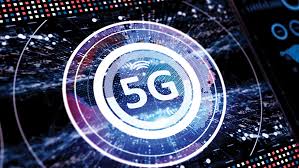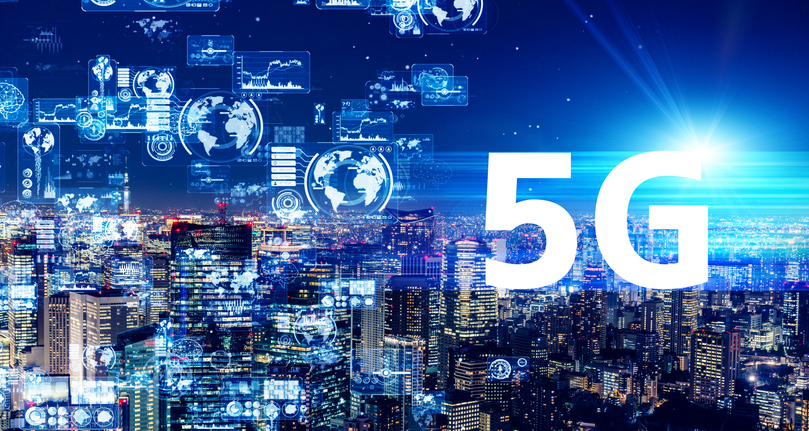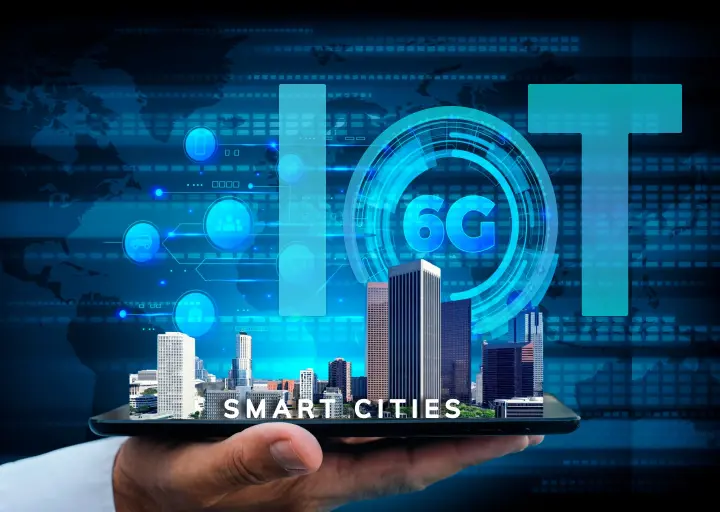
5G technology, the fifth generation of wireless communication networks, promises to revolutionize global communication. As the successor to 4G, 5G offers unprecedented speeds, low latency, and the ability to connect many devices simultaneously. This technological leap is set to transform various aspects of our lives, from personal communication and entertainment to business operations and industrial processes. This blog delves into the impact of 5G technology on global communication, exploring its benefits, applications, challenges, and prospects.
What is 5G Technology?
Technical Overview
5G technology represents a significant advancement in wireless communication. Key technical features include:
- High Speed: 5G networks can provide speeds up to 100 times faster than 4G, with potential download speeds exceeding 10 Gbps.
- Low Latency: 5G offers ultra-low latency, with response times as low as one millisecond, which is crucial for real-time applications.
- Increased Capacity: 5G can support many connected devices per unit area, making it ideal for dense urban environments and the Internet of Things (IoT).
- Enhanced Reliability: Improved network reliability and availability ensure consistent performance.
- Network Slicing: 5G allows for the creation of multiple virtual networks within a single physical 5G network tailored for specific applications and services.
Spectrum and Infrastructure
5G operates across various frequency bands, including low-band, mid-band, and high-band (millimetre wave) spectrums. Each band has its characteristics:
- Low-Band: Offers broad coverage but lower speeds, suitable for rural and suburban areas.
- Mid-Band: Balances coverage and speed, ideal for urban areas.
- High-Band (mmWave): Provides ultra-high speeds and low latency but with limited coverage, requiring dense infrastructure of small cells.
Benefits of 5G Technology
1) Enhanced Mobile Experience
5G technology significantly enhances the mobile experience for users. Faster download and upload speeds allow for seamless streaming of high-definition videos, quicker downloads of large files, and smoother gaming experiences. The low latency ensures real-time responsiveness, particularly beneficial for applications like augmented reality (AR) and virtual reality (VR).
2) Internet of Things (IoT) Expansion
The capacity of 5G to connect a vast number of devices simultaneously paves the way for the expansion of the IoT. Smart cities, connected homes, and industrial IoT applications can flourish, improving efficiency, automation, and data-driven decision-making. For instance, intelligent traffic management systems can reduce congestion and improve safety, while smart grids can optimize energy consumption and distribution.
3) Industrial and Business Transformation
5G technology is set to transform industries and business operations. In manufacturing, 5G-enabled smart factories can leverage automation, robotics, and real-time monitoring to enhance productivity and reduce downtime. In logistics, 5G can improve supply chain visibility and management through real-time tracking and communication.
4) Healthcare Advancements
In healthcare, 5G can enable telemedicine, remote surgery, and real-time patient monitoring, improving access to medical services and reducing the burden on healthcare facilities. High-speed, low-latency networks ensure medical professionals can receive and analyze critical data promptly, leading to better patient outcomes.
5) Autonomous Vehicles
The automotive industry will also benefit from 5G technology, particularly in developing and deploying autonomous vehicles. 5 G’s low latency and high reliability are essential for real-time communication between vehicles, infrastructure, and pedestrians, enhancing safety and efficiency in transportation systems.
6) Economic Growth and Job Creation
The deployment and development of 5G networks are expected to drive significant economic growth and job creation. According to industry reports, 5G could contribute trillions of dollars to the global economy over the next decade, creating millions of jobs in network deployment, maintenance, application development, and other related sectors.
Applications of 5G Technology
1) Enhanced Mobile Broadband (eMBB)
Enhanced Mobile Broadband (eMBB) is one of the primary use cases for 5G. It focuses on providing high-speed internet access and supporting applications such as ultra-high-definition video streaming, virtual reality, and augmented reality experiences. eMBB aims to enhance user experiences in fixed and mobile environments, making high-quality content accessible anywhere.
2) Massive Machine Type Communications (mMTC)
Massive Machine Type Communications (mMTC) refers to the ability of 5G networks to support many connected devices, essential for the IoT ecosystem. Applications of mMTC include smart cities, agriculture, and environmental monitoring. These applications rely on vast sensor networks that collect and transmit data, enabling real-time analysis and decision-making.
3) Ultra-Reliable Low-Latency Communications (URLLC)
Ultra-reliable low-latency Communications (URLLC) cater to applications that require extremely low latency and high reliability. This includes critical applications such as remote surgery, autonomous driving, and industrial automation. URLLC ensures that data is transmitted with minimal delay and high precision, which is crucial for the safety and effectiveness of these applications.
4) Fixed Wireless Access (FWA)
Fixed Wireless Access (FWA) provides high-speed internet access to homes and businesses without traditional wired connections. FWA leverages 5G technology to deliver broadband services, particularly in areas where fibre or cable infrastructure is not feasible or cost-effective. This can help bridge the digital divide and provide connectivity in underserved regions.
5) Immersive Experiences
5G technology enables immersive experiences through AR and VR. These technologies can transform various sectors, including entertainment, education, and retail. For example, virtual tours, immersive learning environments, and enhanced online shopping experiences become more feasible with 5 G’s high-speed and low-latency capabilities.
6) Smart Cities
The concept of intelligent cities relies heavily on 5G technology. Smart cities leverage IoT devices and sensors to manage urban infrastructure and services efficiently. Applications include intelligent traffic management, waste management, energy optimization, and public safety. 5 G’s ability to connect numerous devices and provide real-time data transmission is critical to the success of innovative city initiatives.
Challenges of 5G Technology

1) Infrastructure Development
The deployment of 5G infrastructure is a significant challenge. Unlike previous generations, 5G requires a dense network of small cells, particularly for high-band mmWave frequencies. This necessitates substantial investment in infrastructure development, including installing new base stations and upgrading existing ones. Additionally, regulatory hurdles and the need for local government approvals can slow down the deployment process.
2) Spectrum Allocation
Efficient spectrum allocation is crucial for the success of 5G. Governments and regulatory bodies must allocate appropriate frequency bands for 5G use while ensuring minimal interference with existing services. The competition for spectrum among various industries can complicate the allocation process, requiring careful planning and international coordination.
3) Security Concerns
With 5 G’s increased connectivity and data transfer capabilities, security concerns become more prominent. The larger attack surface and integration of numerous IoT devices present new vulnerabilities that malicious actors could exploit. Ensuring robust cybersecurity measures and protecting user privacy are critical challenges that must be addressed.
4) Interoperability
Interoperability between 5G networks and devices is essential for seamless global communication. Manufacturers and service providers must adhere to international standards to ensure that devices and networks work together efficiently. Achieving this level of interoperability requires collaboration among industry stakeholders and regulatory bodies.
5) Cost and Accessibility
The cost of developing and deploying 5G networks is substantial. This can lead to disparities in access to 5G technology, particularly in developing regions. Ensuring that 5G is accessible and affordable for a broad population is a challenge that needs to be addressed to avoid widening the digital divide.
Future Prospects of 5G Technology
1) Evolution to 6G
While 5G is still in its early stages of deployment, research and development for the next generation of wireless technology, 6G, are already underway. 6G is expected to build on the foundations of 5G, offering even higher speeds, lower latency, and more advanced capabilities. The evolution to 6G will likely bring new applications and opportunities that we have yet to imagine.
2) Integration with Emerging Technologies
5G will catalyze integrating and advancing other emerging technologies, such as artificial intelligence (AI), edge computing, and blockchain. These technologies will complement 5G, enhancing its capabilities and enabling new use cases. For example, AI can optimize network performance, while edge computing can reduce latency by processing data closer to the source.
3) Global Collaboration
The global nature of 5G technology necessitates international collaboration. Governments, regulatory bodies, and industry stakeholders must work together to develop standards, allocate spectrum, and ensure interoperability. Global partnership will also be essential in addressing security concerns and fostering innovation in 5G applications.
4) Economic Impact
The economic impact of 5G technology is expected to be profound. By enabling new business models, enhancing productivity, and creating new industries, 5G will contribute significantly to global economic growth. Sectors such as healthcare, manufacturing, transportation, and entertainment will particularly benefit from the advancements brought by 5G.
5) Social and Environmental Benefits
Beyond economic growth, 5G technology has the potential to deliver social and environmental benefits. Improved connectivity can enhance access to education and healthcare, particularly in remote and underserved areas. Innovative city applications can also lead to more sustainable urban environments, reducing energy consumption and optimizing resource management.
The impact of 5G technology on global communication is transformative, ushering in a new era of connectivity and innovation. From enhancing mobile experiences and expanding the IoT to transforming industries and enabling smart cities, 5G promises to revolutionize various aspects of our lives. However, the deployment and adoption of 5G come with significant challenges, including infrastructure development, spectrum allocation, security concerns, interoperability, and cost. Addressing these challenges requires collaboration among governments, regulatory bodies, industry stakeholders, and communities.
As we look to the future, the evolution of 5G to 6G, integration with emerging technologies, and global collaboration will shape the trajectory of wireless communication. The economic, social, and environmental benefits of 5G will be far-reaching, contributing to global progress and development. Embracing the potential of 5G while navigating its challenges will be crucial in realizing the full benefits of this revolutionary technology


